All products featured are independently chosen by us. However, SoundGuys may receive a commission on orders placed through its retail links. See our ethics statement.
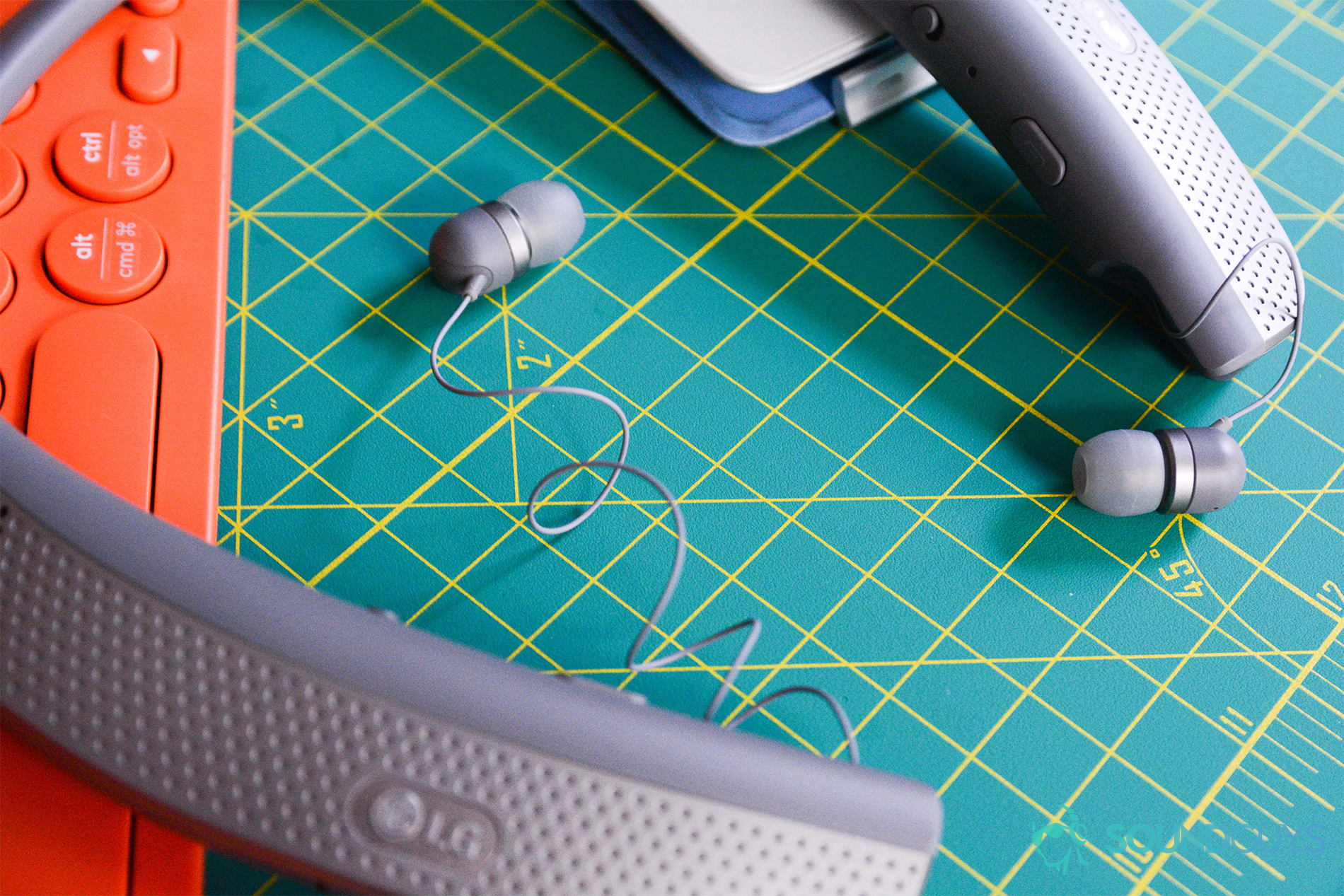
LG Tone Studio Review
September 12, 2017
LG Tone Studio
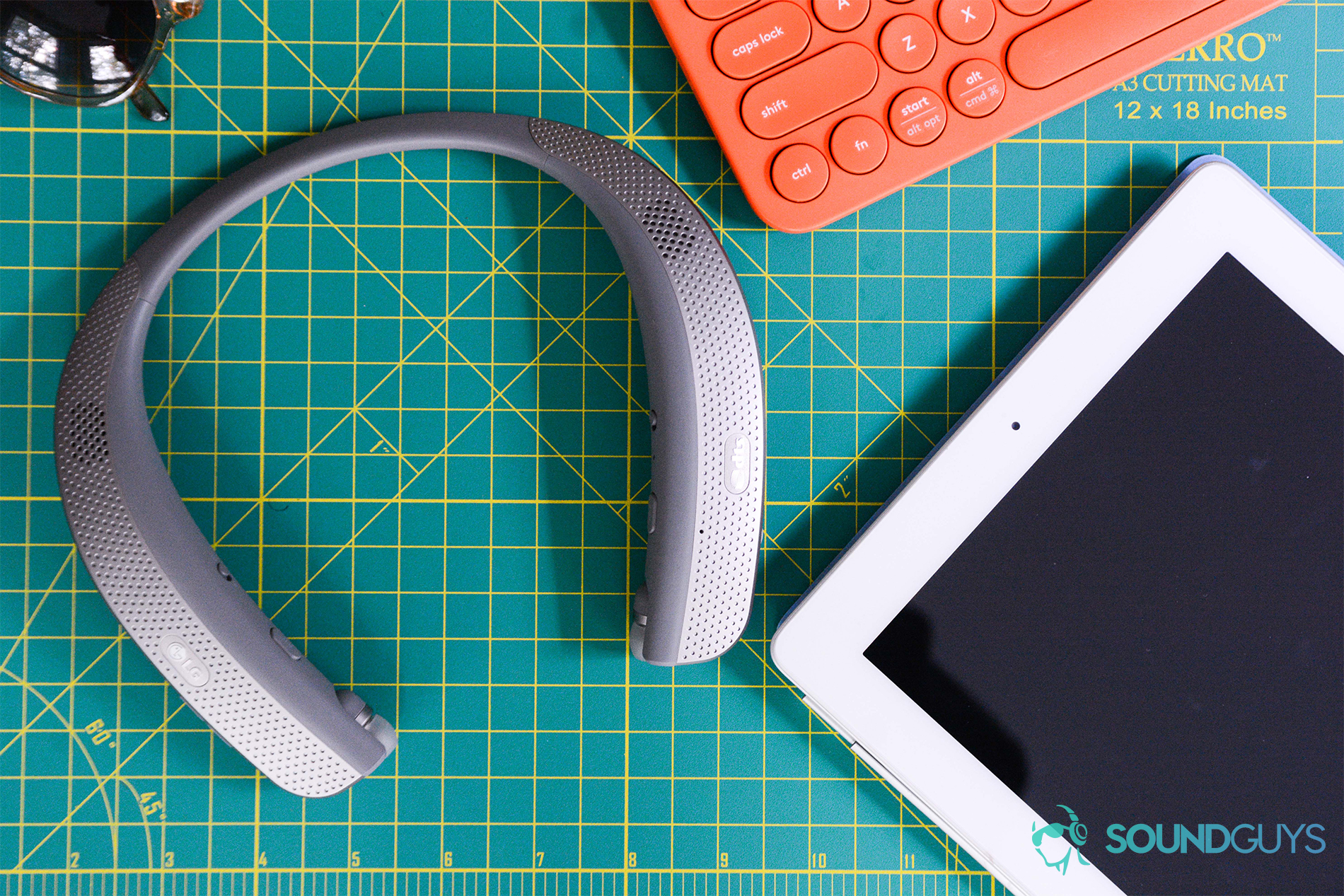
You know when a friend is lamenting over x, y or z and all you can do is everything but the one thing you’re supposed to be doing — listening? Well, LG’s Tone Studio are like that. Life’s Good (commonly recognized as LG) has been in the tech game for years now. The company partnered with DTS to develop the 3-D sound modeling of the Tone Studio Bluetooth headphones. It’s doing the most and is absolutely decked out, but it fails to be what we consumers need it to be at this price point: a great sounding pair of headphones.
What’s Inside

Unlike the headphone’s features, the accessory list is short and to the point. Aside from the headset there’s a user manual, charging cable, and extra ear gels (small) included. The good stuff can be found in the integrated software and logical buttons placed on the neckband.
Build & Design
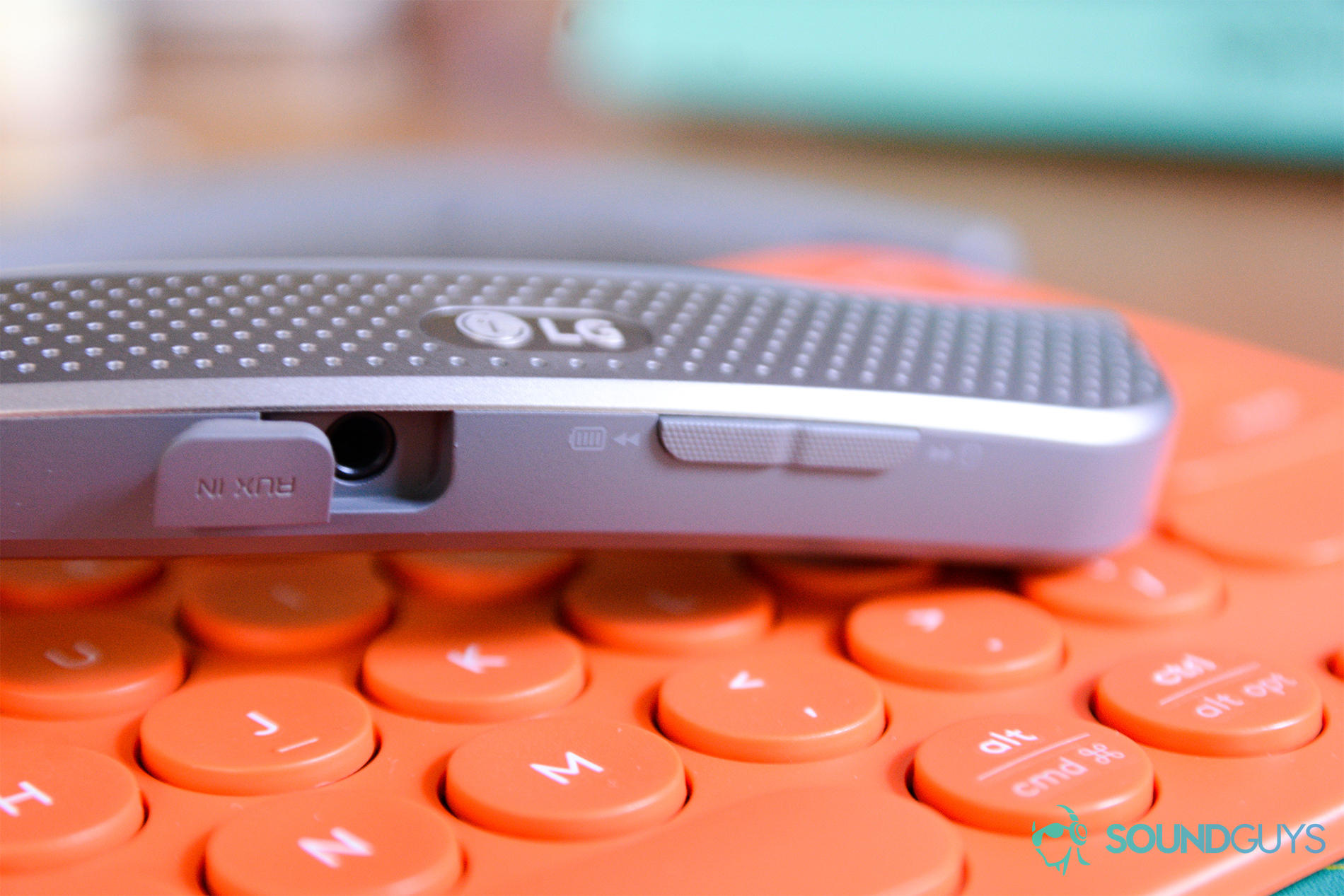
If it wasn’t already apparent by the functionality of the Studio, its design reinforces every high schoolers’ biggest fear – you’re either hot or you’re not. Well, Tone Studio, you’re not. But that’s okay! Your personality is pretty neat.
The feature set is full-bodied with sweet notes of cohesion and a hint of craftsmanship, enough to make any generic sommelier swoon. What LG refers to as a “personal surround experience” is the highlight of these cans, and for good reason. It’s something new and curiosity provoking. As I’ll dive into later, the sound of the speakers is much more enjoyable when watching TV or movies than when listening to music. Its “haptic user experience” quite literally felt like more of a symptom of engineering issues but I actually enjoyed it in the context of bass-heavy songs.
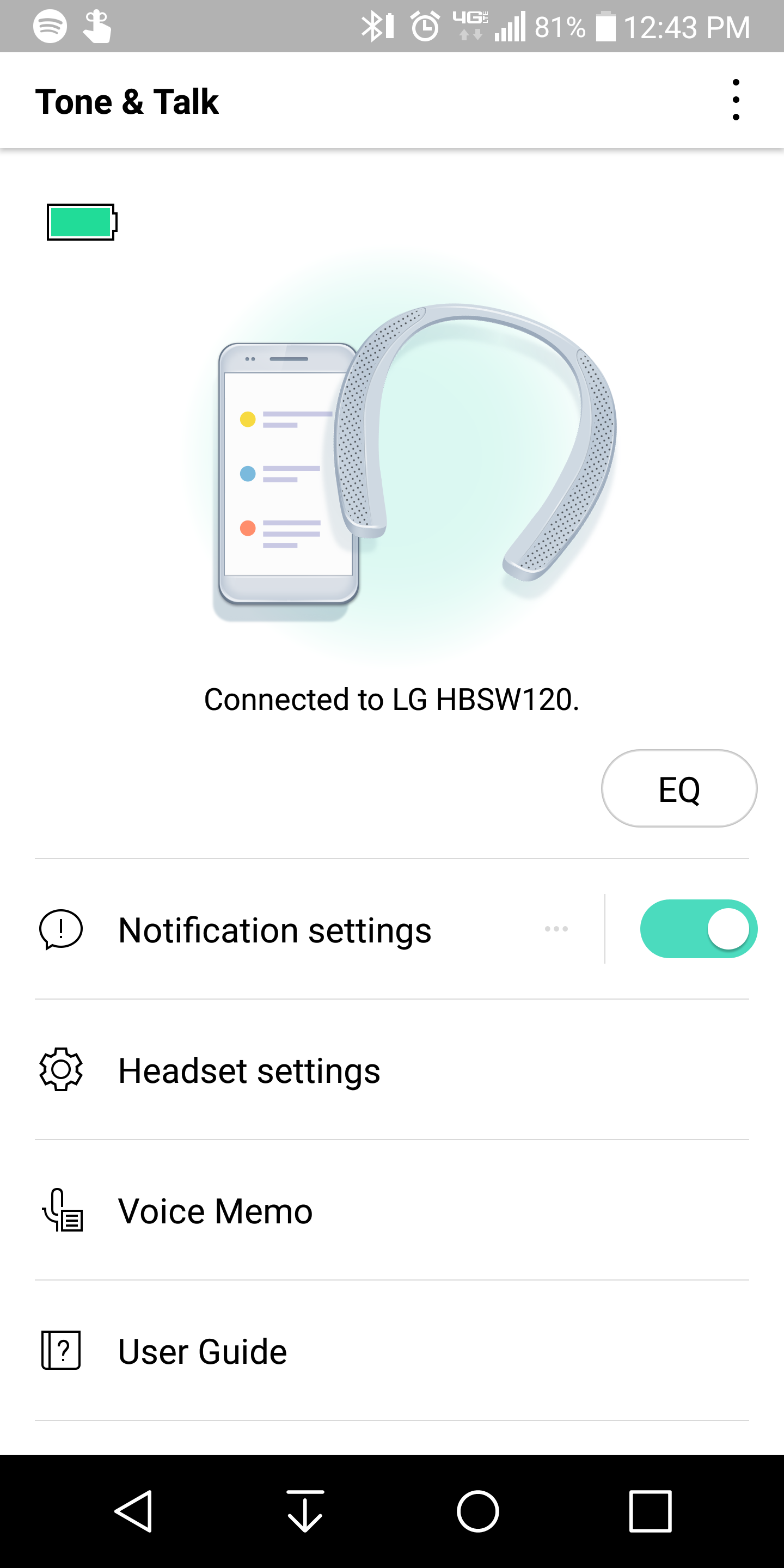
Additionally, LG has mocked up an app for you to use with your device, but I say “mocked up” intentionally. It feels unfinished and definitively unpolished. The app allows you to choose your EQ preset, but its options are slim – bass, treble, highs. Other than that, you can enable/disable notifications through the headset, and… that’s pretty much it. It does look clean though, so good job on design-hygiene LG.
Connectivity
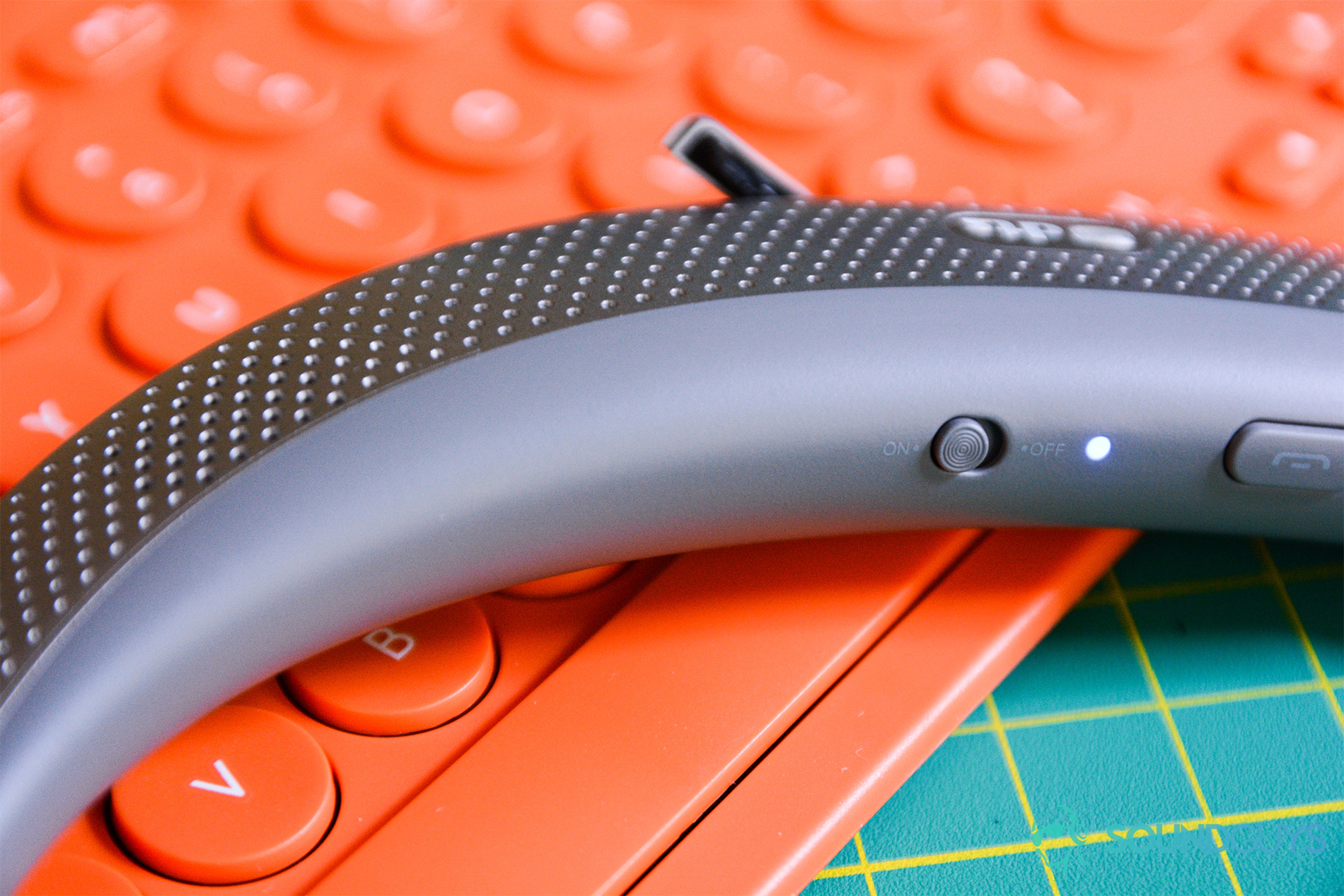
Connecting to my LG G6 was as simple as enabling the phone’s bluetooth and switching the neckband on. Not only that, but the connectivity was great! Earnestly speaking, I was highly impressed with its ability to stay connected as I roamed into the office kitchen to lazily examine any of the five Keurigs on the counter top. In total, LG claims up to 33 feet of reliable connectivity and my experiences support this. Yet if you want to connect via auxiliary cord you can, though this felt odd to me with a wire going into the neckband in tandem with the earbud wires crawling up my neck.
Battery
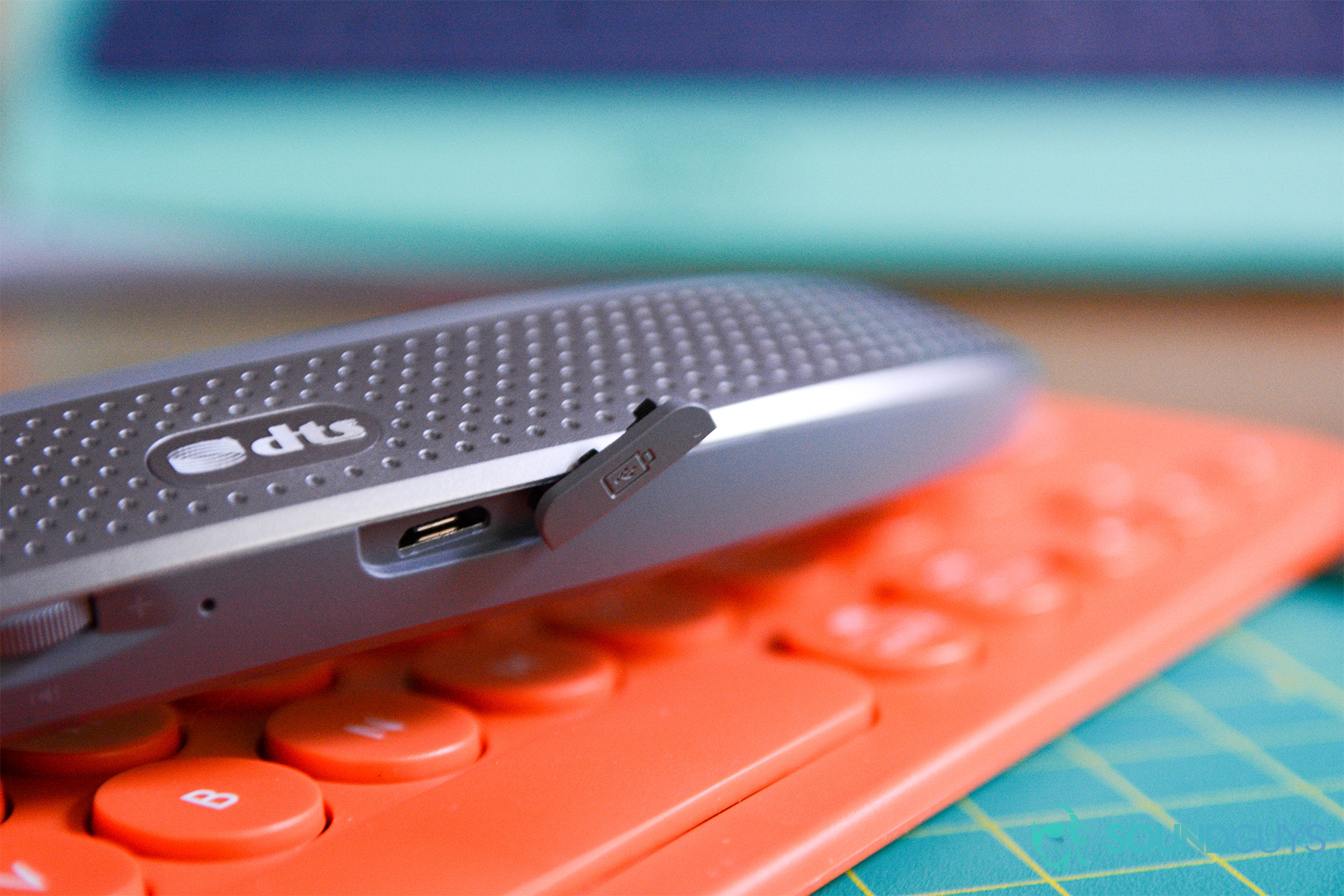
Battery life is one of the most impressive aspects of this wireless headset. With other bluetooth earphones, I’ve been lucky to get three hours of listening before having to juice them up again. However, with the Studio you get up to 35 hours of listening with the earbuds and six hours with the speakers. Actually, I was able to get closer to seven hours of listening at a normal volume from the speakers when on my Netflix binge.
Moreover, the Studio continue to showboat with an unbelievable 61 days of standby time. For all of its battery life, you’d think the Studio would take quite a while to charge. Quite the contrary, friends; it took a mere two hours to top up from zero percent.
Sound Quality
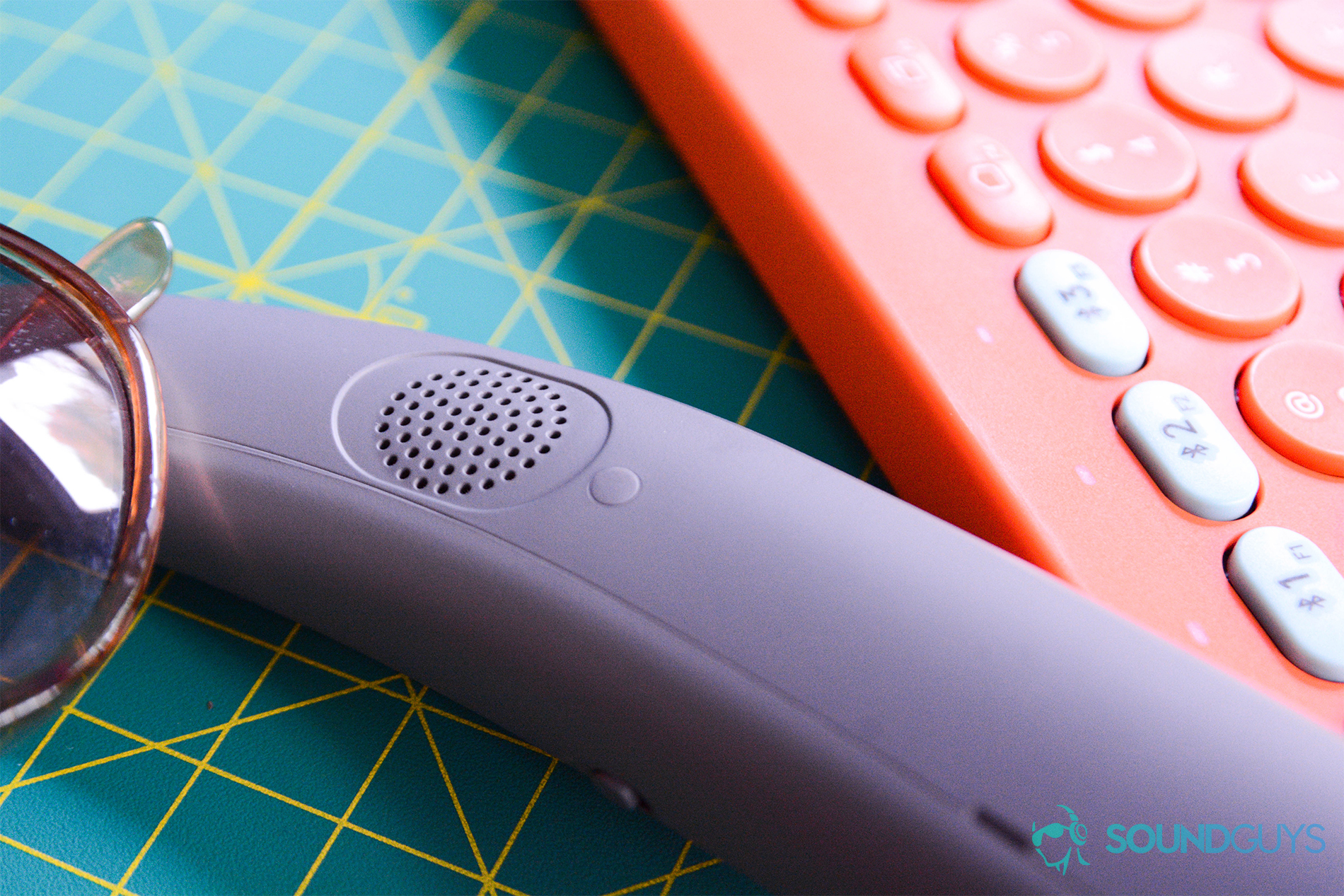
On the whole, I found the sound quality to be just okay. It’s apparent that the main selling point of the Studio is their versatility and novelty, both of which LG nails in this instance. It’s unfortunate that the sound signature is only enjoyable when it comes to the mids.
Lows
The Studio handles lows similarly to how I handle children, not well. When engaging the earbuds I felt as if the bass was rather lackluster; no oomph or punch. Not even a shove, really. In Lone Digger by Caravan Palace, the main beat is a steady thump throughout. The horns sounded fine, but – particularly with songs like this – I like to really feel the bass, the experience of the song, and I can’t say that LG delivered in that department.
When using the headset in speaker mode, the sound quality degraded quite a bit overall. Interestingly enough with this song, I enjoyed the bass more thanks to LG’s Wearable Bass™. Although its effect is likely an unmitigated side effect of the headphones, I do appreciate the marketing effort and actually enjoyed the fuzzy vibration of the existing bass on my collarbone.
Mids
Regarding the mids, the Tone Studio’s really step up their game. Sylvan Esso’s voice in Die Young was clear and separate from the instrumental backing. It was only when her register dropped a bit during the chorus and bridge that I noticed a muddied quality to her voice as it jumbled and tumbled into the undefined lows. Aside from that, the mids are clearly where LG chose to flesh out the sound signature. They’re crisp and sounded like Meath was singing for me.
Activating the speakers rendered the mids a bit less precise but I enjoyed the surround sound effect in this song so much that I found myself forgiving the headphones in this department. Actually, I would highly recommend listening to Die Young with these in speaker mode as it truly does become an immersive experience, hearing the plaintive tone of Amelia Meath’s voice, especially toward the end when the reverb kicks in.
Highs
The highs were reminiscent of the underwhelming lows. While I unwound to The Punch Brothers’ folksy roots in Boll Weevil, a song I know better than the back of my hand, I was sad to find that the mandolin and violin highs were like a drenched watercolor canvas. The idea was there and I could pick out blotched colors, but they all ran into each other to form an unpleasant mixture.
Granted, the highs were more impressive through the earbuds when compared to the bass. However, the inverse was true when listening via the speakers. Since LG doesn’t also offer some kind of equivalent to its Wearable Bass™ for the highs, they ended up sounding almost nonexistent.
Soundstage
Okay, LG, you’re right. I’ve been giving you a hard time. It is a fascinating product but a few things just need to be brushed up. That being said, the soundstage on these is the most impressive aspect of its character. You can tell that LG paired up with DTS. The speakers did a wonderful job replicating that sought after, surround sound feel. As someone who’s admittedly not an avid TV watcher, I binged an entire season of Netflix’s (already cancelled) Gypsy using the Studio and it sounded phenomenal. Truly the saving grace of the show for me, but that’s someone else’s prerogative to dive down the rabbit hole of the Netflix business model.
Conclusion
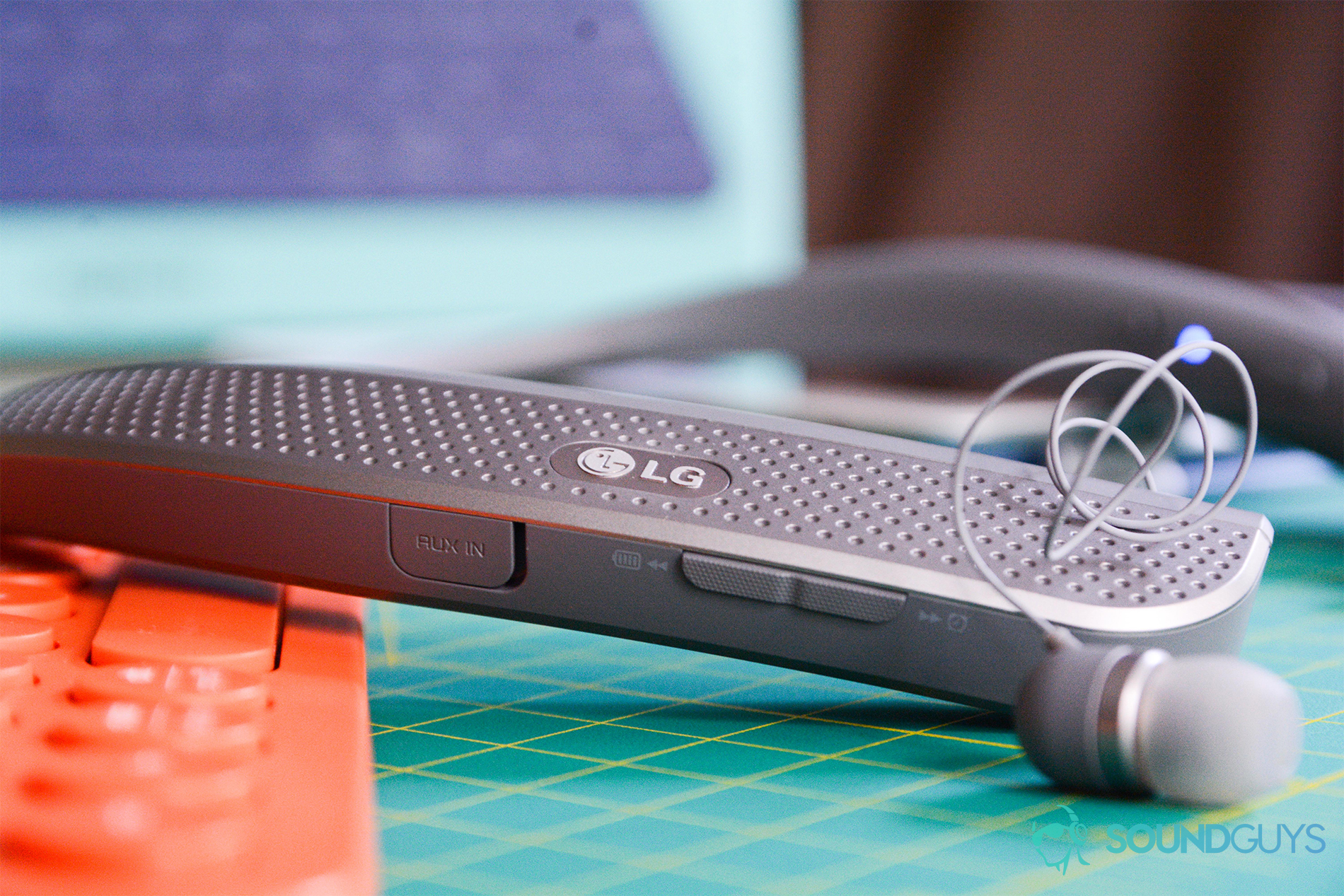
Alright, so the LG Tone Studio headphones aren’t perfect. In fact, it has a lot that could be improved upon for the next iteration if there is one. That being said, for people who want a simulated surround sound experience for a fraction of the cost of a professional setup, it’s a great option. They’re comfortable, relatively discreet, with great range and an even greater battery life. Yeah, it won’t please the ardent audiophile, but – really – what bluetooth headphone will? (rhetorical)
If you’re searching for “blow your socks off” wireless headphones, these aren’t them. I’d recommend looking into the wireless variants of the Sennheiser Momentum or B&W P7 instead. On the other hand if you just want to try a different listening experience and can’t even differentiate between lows, mids, and highs that well anyway, these could be a great fit for you.
Thank you for being part of our community. Read our Comment Policy before posting.